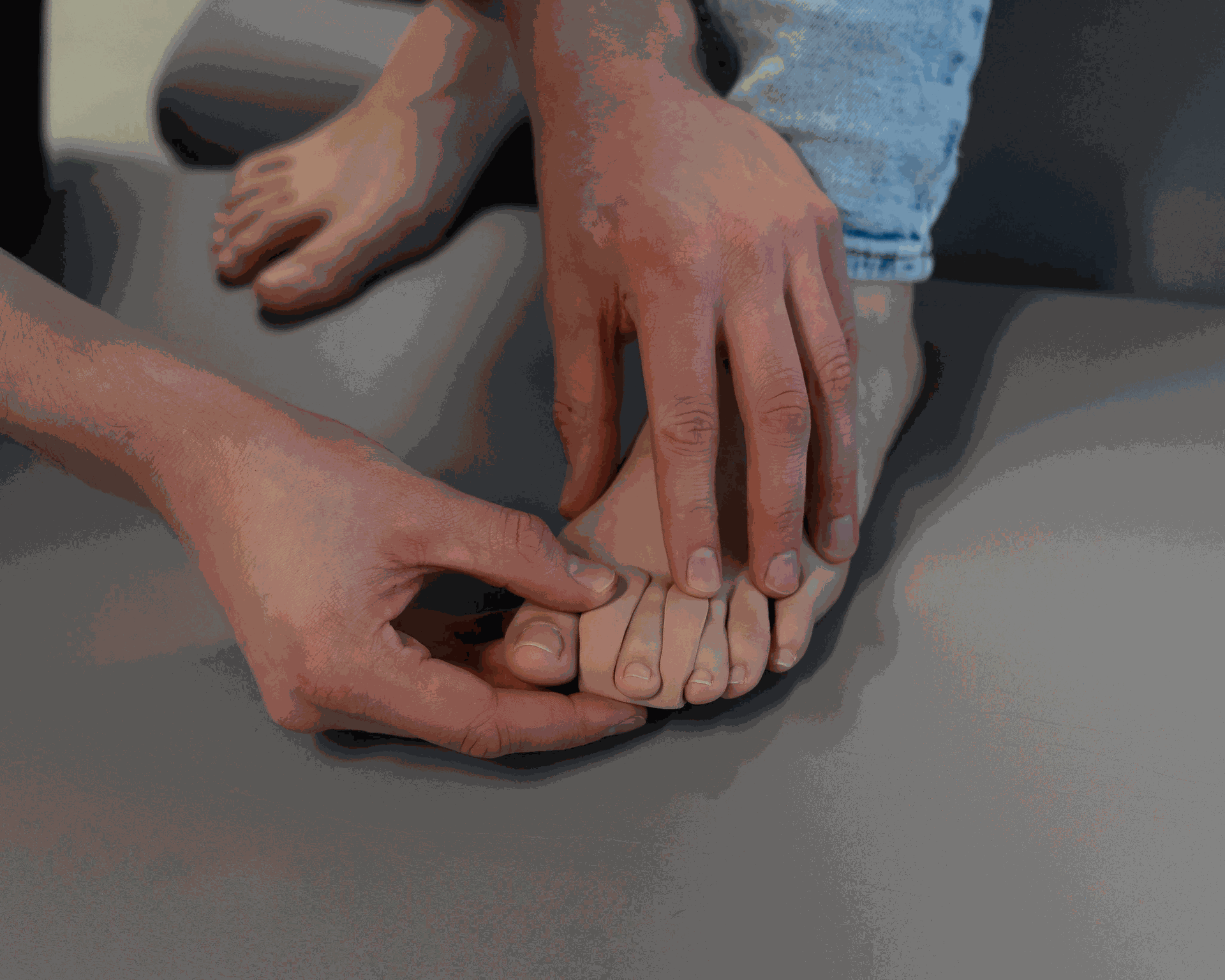The hammer toe is a common foot condition that affects many people. This deformity, often painful, can impact the quality of life if not treated in time. This article aims to provide an in-depth understanding of what hammer toe is, the causes of its occurrence, its symptoms, and the various treatment options available.
What is a hammer toe?
A hammer toe occurs when the middle joint of the toe bends downward, giving it a hammer-like shape. This deformity usually affects the second toe but can also impact other toes. This abnormal position is caused by an imbalance between the muscles, tendons, and ligaments responsible for keeping the toe straight.
There are two types of hammer toes:
- Flexible: The toe is still flexible and can be straightened with gentle pressure.
- Rigid: The toe is fixed in its bent position, often accompanied by more intense pain.
The causes of hammer toe
The main cause of this deformity is generally a muscular imbalance, but several factors can play a role:
- Inappropriate shoes: Wearing narrow or high-heeled shoes pushes the toes forward and compresses them, leading to abnormal bending in the long term.
- Genetic factors: Some people have a hereditary predisposition to hammer toes, particularly those with flat or high-arched feet.
- Underlying pathologies: Neuromuscular disorders, arthritis, or diabetes can also cause or worsen the onset of this deformity.
- Traumas or injuries: A foot trauma can damage the muscles and tendons, leading to a progressive deformity of the toe.
The symptoms of a hammer toe
People suffering from a hammer toe may experience various symptoms, depending on the severity of the deformity:
- Pain in the toe: The pain often occurs when wearing shoes, especially those that squeeze the toes.
- Calluses and corns: The constant friction between the toe and the shoe promotes the formation of corns, usually on the top or tip of the toe.
- Inflammation and redness: These symptoms are common due to the constant irritation of the toe bent against the shoe.
- Stiffness and loss of mobility: Over time, the toe can become rigid and unable to straighten, making walking painful.
Treatments for hammer toe
The treatment of a hammer toe depends on the degree of the deformity and the discomfort it causes. Here are the main therapeutic options:
- Proper shoes: The first step to take is to wear comfortable shoes that are wide in the toe box, providing enough space for the toes. This helps reduce pressure and prevents the worsening of the deformity.
- Custom orthopedic insoles: If the deformity is due to postural imbalances or weight distribution issues, wearing custom-made orthopedic insoles can help correct these problems and relieve pain.
- Custom orthoplasties: Orthoplasties are devices specially designed to protect and straighten the affected toe. Made to measure, they help reduce friction of the toe against the shoe and relieve pain.
- Rehabilitation exercises: Strengthening and toe stretching exercises can help restore toe flexibility, especially in cases of flexible hammer toes.
- Surgery: When the deformity is rigid or very advanced, surgical intervention may be necessary to straighten the toe and restore mobility. This option is generally considered as a last resort.

Prevention of hammer toe
As with most podiatric conditions, prevention is key. Here are some tips to avoid the onset or worsening of this deformity:
- Choose suitable shoes: Opt for shoes that are wide enough at the front, with a moderate heel, to allow your toes to spread naturally.
- Avoid prolonged high heels: Although high heels can be stylish, wearing them for extended periods increases pressure on the toes, thereby raising the risk of deformities.
- Check your feet regularly: Inspect your feet and toes for early signs of corns, calluses, or deformities. The earlier the care, the better the chances of preventing complications.
- Do foot stretching exercises: Strengthening and loosening your foot muscles can help prevent the onset of imbalances.
Why consulting a podiatrist is important
If you experience pain in your toes, signs of deformity, or if your shoes feel uncomfortable, it is important to consult a podiatrist. Through a thorough examination, they will be able to diagnose a hammer toe at an early stage and suggest an appropriate treatment. Regular podiatric follow-up helps prevent complications and significantly improve your quality of life.
At Luxembourg-Podologue, Our qualified podiatrists carefully assess each case and offer personalized treatments to relieve pain, correct deformities, and improve the comfort of your feet. Whether you need custom orthotic insoles or orthoplasties, we put our expertise at the service of your foot health.